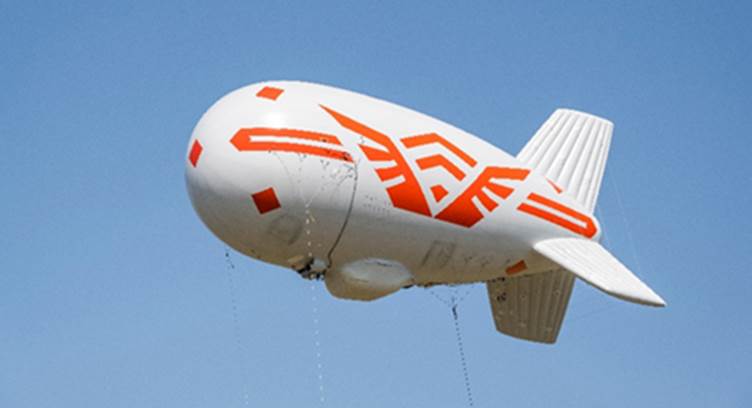SoftBank announced that it developed a high-altitude autonomous tethered balloon base station system with US-based, SoftBank Group.
investee Altaeros Energies, and that both companies successfully achieved stable and wide-area network coverage with this system at a field trial conducted at Hokkaido Spaceport, Taiki Town, Hokkaido, Japan. During the trial, Altaeros' autonomous tethered balloon (aerostat) and SoftBank's base station system was equipped with SoftBank's proprietary cylindrical antenna, a multi-element phased array antenna that realizes communication area footprint fixation.
This novel technology, developed by SoftBank and its subsidiary HAPSMobile to enable stable connectivity regardless of airborne motion, is being researched with the aim of providing stable network coverage (a footprint) from the stratosphere using High Altitude Platform Station (HAPS) technologies.
To restore telecommunication networks in the event of a disaster, SoftBank has implemented tethered-balloon wireless relay systems. The field trial conducted in May combined SoftBank's footprint fixation technology and Altaeros' ST-Flex*3 high-altitude autonomous tethered aerostat. Compared to the previous system, the newly developed high-altitude tethered aerostat base station system was operable at higher altitudes and carried heavier communication payloads, and it also achieved wider area network coverage with greater communication stability during the trial.
Using airborne base stations, HAPS platform aircraft provide mobile wireless telecommunications from the stratosphere to the ground while flying in a circle. One challenge is that the communication area, or footprint, projected to the ground cannot be fixed because cells rotate as the aircraft turns, which in turn causes frequent handovers and affects reception strength levels, thereby impacting telecommunications quality. By using a cylindrical antenna with digital beamforming control, SoftBank's footprint fixation technology secures the cell footprint on the ground by controlling the direction of radio beams as the airborne vehicle rotates, which is essential for airborne wireless telecommunications platforms.
During the field trial conducted at Hokkaido Spaceport, Taiki Town, Hokkaido, Japan, the ST-Flex system was tethered at an altitude of 249m. Under good line-of-sight, wide-area network coverage of a few tens of kilometers and stable connectivity enabled by footprint fixation technology was successfully verified. Furthermore, even when the altitude, pitch and yaw of the aerostat equipped with the base station changed due to changes in wind speed and direction, there were no handovers for mobile devices and signal reception levels were unchanged. As a result, stable connectivity was verified.
Based on the results of this field trial, SoftBank will study ways of utilizing its acquired know-how and data for application to its telecommunication network disaster preparedness and the construction of HAPS-based telecommunication platforms.






















